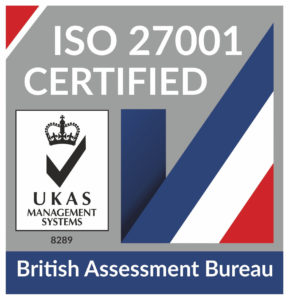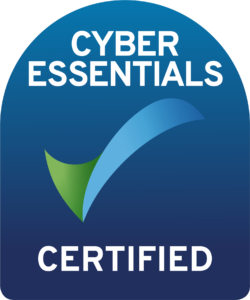
HaloITSM Guides
Documentation to assist with the setup and configuration of the HaloITSM platform
Sage 200 Integration
In this guide we will cover:
- What is the Sage 200 Integration?
- Requirements
- NetHelpDesk.Sage200Invoicer
- Connecting to Sage
- Importing
- Invoicing
What is the Sage 200 Integration?
The Sage 200 integration allows connection into Halo to create invoices, and the integration is 2-way for easy import of data. You can retrieve all of your Customer and Service Items details from your Sage 200 database (on a read-only basis), and import them straight into the Halo database.
Link for Halo Sage Integrator - https://s3.halopsa.com/Sage200Invoicer.zip
Requirements
Before you can begin configuring the integration in Halo, there are a selection of minimum requirements that must be met, and some additional work outside of the Halo application that must be completed.
You will need direct SQL access to your Halo database for this integration.
Minimum Requirements
Type | Minimum Requirement |
Halo Web Application Version | 1040 |
Halo Windows Application Version | 1289 |
Sage 200 Version | Standard Online, Extra Online or Professional |
Other Requirements
Alongside the minimum requirements specified above, there are some other requirements that must be met. Some of these are version specific to your Sage version.
Windows App Install - For Sage 200 Professional users, you must have a version of the Halo Windows application installed on a machine where the Sage 200 client is installed, which is connected to your live database.
The Sage 200 User who will be running the import must have permissions to override prices on invoice and order lines, as highlighted below. These permissions can be adjusted in Settings > Sales Order Processing > User Permissions.
NetHelpDesk.Sage200Invoicer
Pushing invoices from Halo to Sage 200 requires a new application. The Sage200Invoicer application can be downloaded here. Once downloaded, open the folder, and open the folder corresponding to your Sage 200 version. Copy the folder found inside, and place this in the same folder where your Halo Windows application is running.
For example if your Halo application is setup in “C:\WebApp", then the Sage200Invoicer app would be located in the following location:
“C:\WebApp"
Once you have placed the files in their correct locations, you need to amend the config file for the new application. Open up the Sage200Invoicer folder and you will find a config file called Sage200Invoicer.exe.config. Opening this file in Notepad or another text editor, amend the SQL Server connection string so that the application can successfully connect to your SQL server.
Fig 1. Amending the connection string.
Connecting to Sage
To enable the Sage 200 integration in Halo, go to Configuration > Integrations, and enable the module. Please note that enabling the Sage 200 Integration will disable any other accounts package integration that you have configured. Once the module has been enabled, click the menu icon for the module to begin configuring it.
The first option available to you is your Sage 200 version. Based on the value you specify in here, you will find the setup screen differs greatly due to limitations/differences between the Professional and Online versions. Once set, you should input the name of the company you would like to connect to.
Fig 2. Setup.
If you are using Sage 200 Professional, this is the only configuration required. If you are a Sage 200 Professional user, but you would still like to import your data, skip ahead to the Importing section of this guide. Otherwise you may skip to the invoicing section of this guide. For Sage 200 Online users (Standard and Extra), there are some additional configuration steps to take in order to import your data. If you would like to skip this step, then you can go straight to the invoicing section of this guide.
The next step is to login to Sage with your Sage ID. Once you’ve logged in to Sage, an authorisation expiry date will be set to 2 months-time. You can expire the authorisation at any time, but you will need to re-authorise should you want to retrieve any data from Sage 200 in the future.
Once you’ve successfully authorised with Sage, you need to retrieve your company data. Providing you have input a valid company name into the configuration setting, clicking the Retrieve Company Data button will save your company and tenant ID to Halo, and these values will be displayed on the configuration screen as shown above. An invalid name will result in an error message which will be displayed on screen.
Importing
For Sage 200 Professional customers, it is not possible to import your data directly from Sage 200. Instead, you will need to use the standard XLS import functionality that is available elsewhere in the Halo application. For ease of use, the configuration settings for the XLS imports have also been included on the Sage 200 integration configuration screen.
Sage 200 Online users (Standard/Extra) can import data directly from their Sage 200 instances. If you are using top levels in Halo, you first need to specify which top level you would like any customers to be created under.
Clicking on the Import Customers and Sites button will attempt to retrieve your customer list from Sage 200, and the standard importer screen will be displayed. Any error messages will be displayed on the screen should your data fail to be retrieved. Select the records you would like to import, and then click start once ready. The result of each row will be shown in the result column.
Items can also be imported from Sage 200. Each item must belong to a group in Halo. You can import your item/product groups from Sage 200 should you wish, or, all items will be saved under the default item group that you specify.
Invoicing
It is currently only possible to push invoices from Halo to Sage 200 in the Windows application. There is no setup required in the Windows application, other than ensuring that the Halo.Sage200Invoicer tool has been copied to the correct location. Please speak to your Halo account manager if you are unsure how to access this.
To send invoices to Sage 200, either run the Accounts Interface as you normally would and ensure that the Sync to Sage 200 option is selected. Alternatively, if you have invoices that are already generated and are waiting to be pushed to Sage 200, you can run the “Sync to 3rd Party Accounts Option”.
Once ready, the console application will open and begin syncing Invoices from Halo to Sage. There is minimal user input required in the console application, other than confirming you would like to continue in some places. All results are displayed in the console, including any error messages, should an error occur.
Invoice Matching Customers and Items
The Customers are matched between Halo and Sage 200 by the Accounts ID property in Halo and the Sage Customer Name.
Fig 3. Accounts ID on a customer.
And the Items are matched between Halo and Sage 200 by the Accounts ID property in Halo and the Sage Field Code.
Fig 4. Accounts ID on an item.
Auto generate invoice numbers
http://desktophelp.sage.co.uk/sage200/professional/Content/SOP/SOPSettingsDocumentNumbering.htm
Popular Guides
- Asset Import - CSV/XLS/Spreadsheet Method
- Call Management
- Creating a New Application for API Connections
- Creating Agents and Editing Agent Details
- Departments and Teams
- Halo Integrator
- Importing Data
- Multiple New Portals with different branding for one customer [Hosted]
- NHServer Deprecation User Guide
- Organisation Basics
- Organising Teams of Agents
- Step-by-Step Configuration Walk Through



